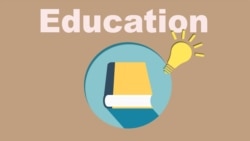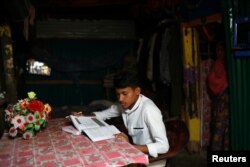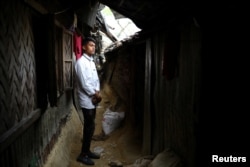One morning in January, Kefayat Ullah walked to his school in southern Bangladesh, just as he had done most days over the past six years.
Kefayat had always been one of the top students in his class. But on this day, the 16-year-old was told he had been expelled. The school’s headmaster told him that he and more than 60 of his classmates were no longer permitted to attend school.
The reason? A government investigation had identified them as Rohingya refugees.
“We went back home crying,” Kefayat said.
Rohingya are mostly stateless Muslims from neighboring Myanmar, also known as Burma. More than 730,000 Rohingya fled across the border after Myanmar’s military launched an offensive against suspected rebels in late 2017. The United Nations has said the violence was carried out with “genocidal intent.”
Thousands of children, like Kefayat, were born in Bangladesh after their parents fled earlier waves of violence in Myanmar.
For years, schools in Bangladesh quietly welcomed Rohingya, who live along the southern coast in the world’s largest refugee settlement.
But the growing number of arrivals has tested Bangladesh’s government. Prime Minister Sheikh Hasina has said the country is not able to fully welcome all of the refugees.
Myanmar has said it is ready to welcome back the refugees. However, the country from which they fled still is dealing with ethnic tensions and violence. The United Nations says conditions are not right for them to return.
'Hungry for education'
In some countries, governments permit refugees to study in local schools or permit groups operating in the camps to teach the national curriculum.
But Bangladesh has not recognized the majority of the Rohingya as refugees. And it does not give Bangladeshi birth certificates to children born in the camps.
The government has also prevented centers in the camps from teaching Bangladesh’s education curriculum, says the U.N. children’s agency, UNICEF.
The recent school expulsions mean that hundreds of thousands of Rohingya may miss out on critical years of education.
“Many students are depressed and frustrated,” said one 21-year-old. He asked not to be named because he was continuing to pass as Bangladeshi so he could go to university.
The young man added, “Yes, we are somehow pretending to be Bangladeshi students. Yes, we have got some education. But now, where will we go? The world should think about this: if we can’t study, our future will be damaged. We are hungry for education.”
Jamal Uddin is headmaster of Leda High School, where Kefayat was once a student. He said of the decision to expel Rohingya, “We are very sorry and disappointed.” He added, “The government is providing everything for the Rohingya -- why not education?”
But other people support the decision. They include the school’s founder, Kamal Uddin Ahmed. He said the arrival of the Rohingya has created big problems for the local community. Some have blamed Rohingya for bringing drugs and crimes to Bangladesh.
“How do you think I feel? We don’t mind the Rohingya, but we mind our lives,” Kamal said.
In January, the head of Bangladesh’s Refugee Relief and Repatriation Commission wrote to school headmasters in and around the city of Cox’s Bazar.
In the letter, commission chief Abul Kalam noted, “It has been seen the trend of Rohingya children’s participation in getting education has been increasing.” He also noted that some Rohingya were using false identity documents so they could go to school.
Abul said, “It is advised to monitor strictly so that no Rohingya children can take education outside the camps or elsewhere in Bangladesh.”
He told the Reuters news agency that Rohingya were getting an education from learning centers operating within the camps.
Secret studying
But many children and their parents describe the learning centers that international agencies operate as offering mostly unstructured learning and playtime.
A temporary school run by Rohingya volunteer teachers opened in February. However, the lead teacher said they had no official permission to operate.
Karen Reidy is a communications officer at UNICEF, which leads education programming in the camps. She said her group was working on making other countries’ curriculums into a “learning framework” for refugee children.
“There’s a risk in the camps that we will see a lost generation of children if we don’t manage to catch them with education, with skills and training at this critical point in their lives,” she said.
At the Nayapara camp, Kefayat and other expelled students tell stories from their years of secret study in Bangladeshi schools. Some of their classmates were cruel to them, said Kefayat.
“They used the word ‘Rohingya’, ‘Burma’ to tease us,” he said. “Nevertheless, we were happy. We need education.”
Kefayat dreamed of completing his education and becoming a reporter “to help our community,” he said. Now, he watches his onetime Bangladeshi classmates travel to and from class in their clean white clothes.
“We feel sad when we see the local students studying in a nice place, quietly,” he said. “Now we are always worried and thinking – what will we do?”
I’m Ashley Thompson.
And I'm Jonathan Evans.
The Reuters news agency reported this story. Ashley Thompson adapted it for VOA Learning English. George Grow was the editor.
_____________________________________________________________
Words in This Story
headmaster - n. the person who is head of a school
intent - n. an aim or purpose
curriculum - n. the courses that are taught by a school, college, etc.
certificate - n. a document that is official proof that something has happened
frustrated - adj. very angry, discouraged, or upset because of being unable to do or complete something
pretend - v. to act as if something is true when it is not true
trend - n. a general direction of change
monitor - v. to watch, observe, listen to, or check (something) for a special purpose over a period of time
strictly - adv. used to describe a command, rule, etc., that must be obeyed
framework - n. the basic structure of something














